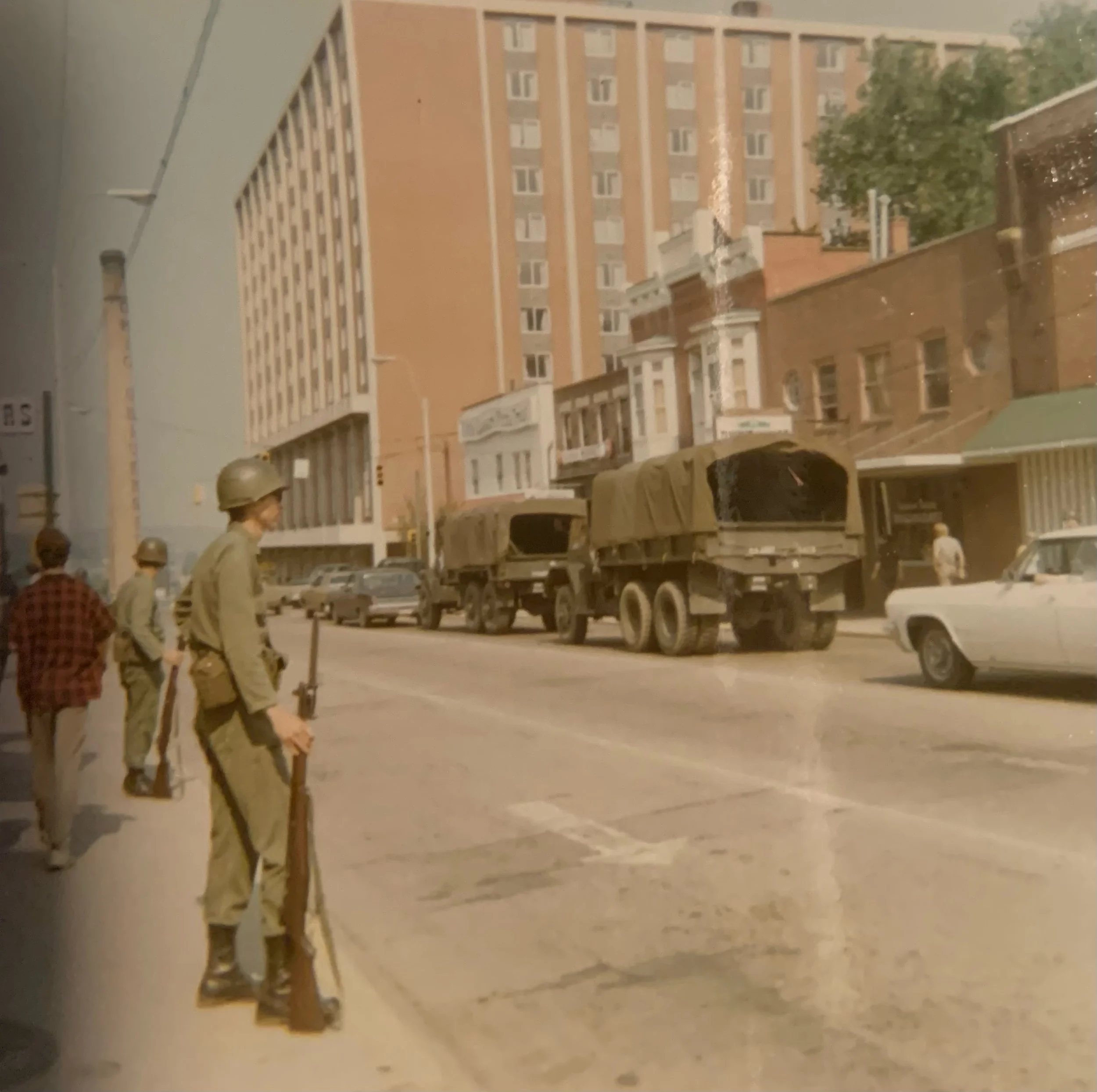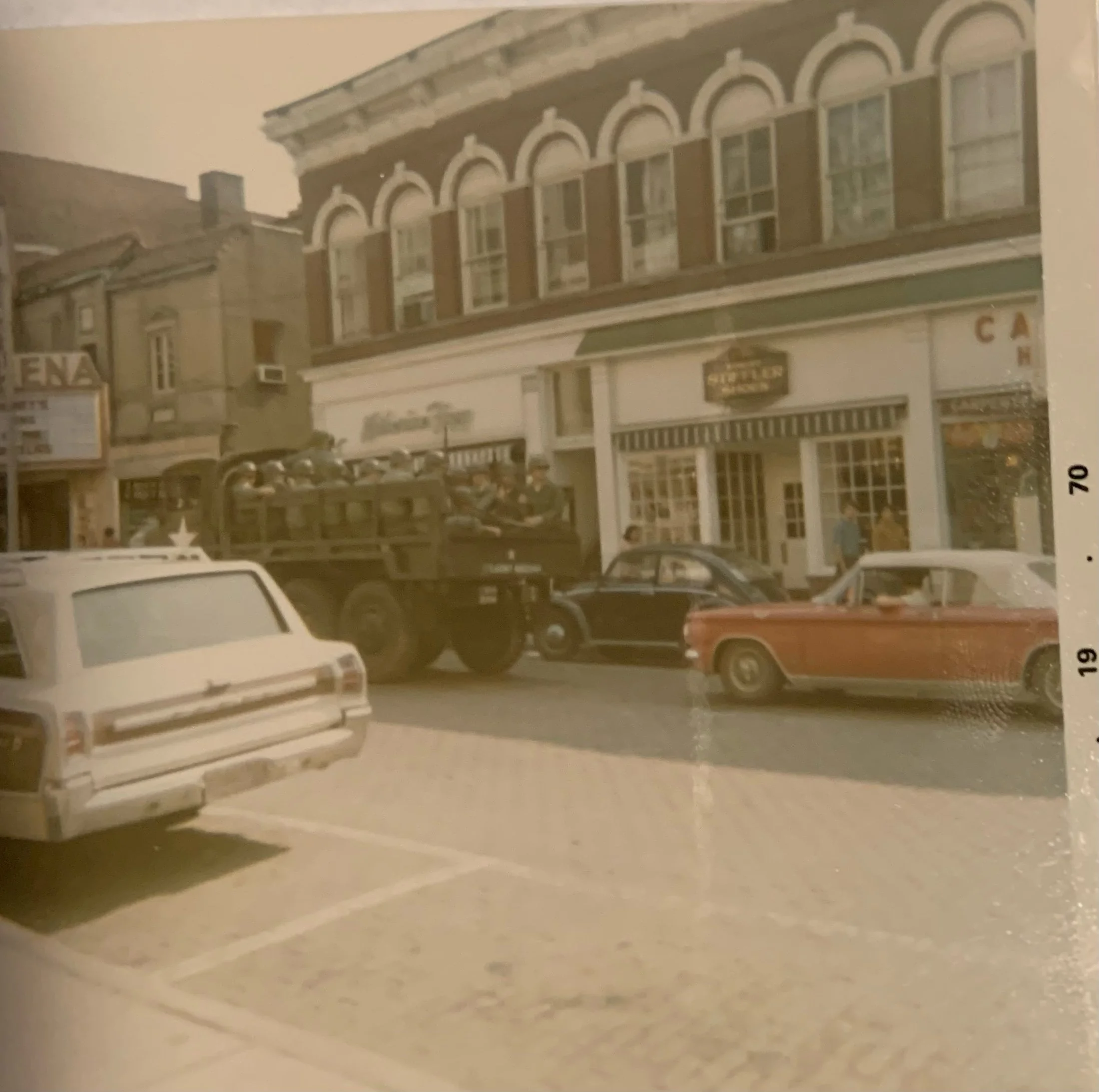Retro Report: Looking back at Ohio U’s student protests
Editor’s Note: This story originally appeared in The New Political’s Winter Magazine: “Moving Forward.”
One might think of political polarization, racial tensions and students sent home early as a description of Ohio University’s 2020 academic year. Think again -- this is a description of Ohio U in 1970.
On May 4, 1970, the state of Ohio became the epicenter of the anti-Vietnam War movement. At Kent State University, the Ohio National Guard gunned down and killed four students who were peacefully protesting the expansion of the Vietnam War. Nine others were wounded.
A copy of The Post the day after the Kent State shootings. From the Ohio University Libraries Digital Archival Collections.
The massacre energized the anti-war movement throughout the nation as all eyes focused on Ohio. Protests on Ohio U’s College Green became a common occurrence.
“If you flunked out of school you could be drafted,” Alan Wagner, an Ohio U class of 1973 graduate, said. “Everyone was just exhausted about the war, and the war was a big deal. People were protesting the war and there was a lot of anti-war sentiment throughout the country, but especially on the college campuses.”
The front page of The Post on April 18, 1967 showing ongoing protests against the Vietnam War. From the Ohio University Libraries Digital Archival Collections.
In a time where students could be drafted but were unable to vote, protests ranged from rallying against the Vietnam War, to lowering the voting age from 21 to 18 and the announcement that Ohio U was raising the tuition for its students, according to Ohio Today.
Looking back, this time period raised Ohio U’s reputation as a campus whose student body welcomed free speech. In 2005, a plaque was dedicated by the class of 2005 on College Green recognizing the university’s support of free speech and its history of students using their voices.
Nelson Commons after being firebombed on the front page of The Post on May 13, 1970. Photo by Lew Stamp.
“College Green has served as a forum for the voices of Ohio University’s students throughout its history. Whether supporting civil rights, advocating for the abolishment of women’s curfews or in protest, students have and will continue to play a vital role in shaping Ohio University,” the plaque reads.
After the Kent State Massacre, anti-war protests at Ohio University and around the country began to grow. Students burned their draft cards, set off fire alarms and created dumpster fires. Students blocking off traffic to protest the war was almost an everyday occurrence, as stated in Ohio University’s College of Arts & Sciences Forum.
Front page of Ohio U’s Afro-American Affairs on Nov. 3, 1970, with mention of the Kent State shooting. From the Ohio University Libraries Digital Archival Collections.
The tension of the protests ultimately led to the arrival of the National Guard. Students would eventually be sent home for the remainder of the semester when then-university President Claude Sowle announced on May 15, that it would be sending students home, according to OHIO News.
Ohio National Guard on Union Street in 1970. Photo by Beverly Wagner, Ohio U class of 1971.
Ohio National Guard on Court Street in 1970. Photo by Beverly Wagner, Ohio U class of 1971.
Another element that contributed to student protests were racial tensions during the fight for civil rights, particularly following the assassination of Martin Luther King Jr.
“In its own way, it was the Black Lives Matter. There was so much racial tension even in the backdrop to the Vietnam War. You have all these young men serving who are African American; they are over there fighting in Vietnam and they aren’t treated well in their own country,” Wagner said.
The debate on collective good and individual freedoms currently polarizing our culture and politics is reminiscent of the late ’60s and early ’70s.






